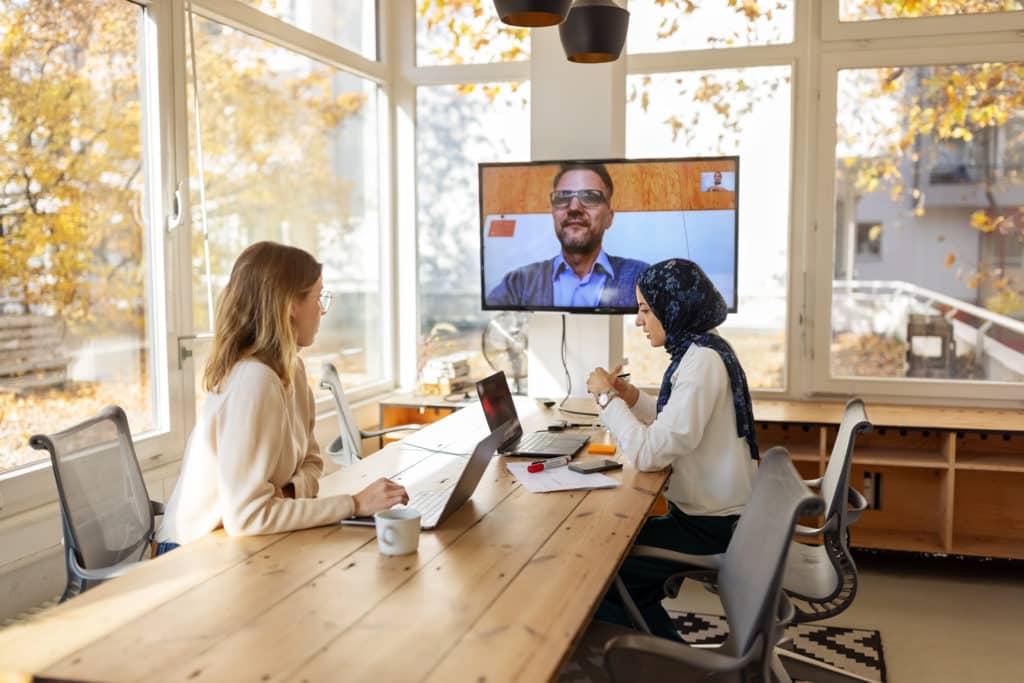The Future of Association Headquarters Space, According to 4 Executives

In a 2019 national study of nonprofit executives, Cresa Global found that 18% of respondents did not have a remote work policy and those that did only permitted an occasional day on a weekly or monthly basis. This changed overnight when two years ago the Covid-19 pandemic began forcing almost all businesses, including associations, to temporarily close their offices and quickly shift their entire workforce to working remotely.
When the pandemic hit, most organizations were somewhere in the middle of a lease or outright owned their building. Occupying office space is a long-term commitment which might exceed five to 10 years and the costs associated with it are the second largest expense item for most associations. For more than two years, organizational resources were being used for an asset that has been underutilized. The emptiness of the office triggered many association executives to reflect on the concept of the workplace and the future of their organization’s headquarters.
Four association leaders were asked their thoughts on this topic. They are Deborah Bowen of the American College of Healthcare Executives, Bob Moore of the American College of Osteopathic Family Physicians, Matt Hornberger of the Association of Diabetes Care & Education Specialists and Denise Froemming of the California Society of CPA’s.

What Does it Mean to be Remote First?
Today, many organizations appear to be operating under a “remote first” way of working. This CEO group was mixed on whether this is the long-term trend and whether this is the correct way to characterize the current workplace model. Froemming believes that “remote first” will continue. She finds that “the benefits of working remoting have been hardwired into many of our lifestyles, with the benefits outweighing any of the negatives on the employee side.” Additionally, she adds “the feeling of missing out, FOMO, isn’t as big of a deal as some thought and the need for social interaction varies for each person. Some are craving coming back and being with people again, others have a sense of newfound freedom that allows them to have it all.” As an employer, she believes “there is a need to be together in some fashion; however, it can be personalized—one size doesn’t fit all, company or person. The challenge lies in the organization’s ability to meet everyone where they are at and create a working environment that is fluid and agile—it is a true partnership.”
Moore shared research from Forrester where only 15% of organizations are implementing an “anywhere work” policy. Thirty-four percent are requiring a full return to the office and 51% are trying hybrid. He is “not sure organizations are as ‘remote first’ as we may think.” He leaned into this concept as ACOFP began hiring staff that lived outside of Illinois adding “as someone who strives for fairness in the workplace, I institutionalized the 100% flex environment, but noted that if productivity drops or other adverse consequences occur, this policy could change.”
Bowen is not sure what “remote first” means. At ACHE they describe their workplace model as “designing work with flexibility and sensitivity based on a few elements including safety first, function and role and the amount of collaboration and teaming needed with others. To this end, we have a current model where we do expect people to be in the office roughly three days a week with two remote.” ACHE expects its team “to do their work as they need to”. She further added that they “do make a few accommodations based on individual situations and care-taking responsibilities.” She does not believe any of us are in a position to predict the long term. “ It’s an evolving situation and we will evolve with it.
Hornberger thinks “that a better way of looking at it is that there was already a disruption, but the pandemic accelerated the change.” He believes remote work is here to stay and “how much an organization empowers its team to work remotely depends on the culture that the leaders are trying to build or maintain.”
A Paradigm Shift for Association Headquarters?
The purpose of an association’s headquarters is likely to change over the next five to 10 years, particularly as leases expire or buildings are sold. As these events occur, and footprints shrink, leaders will need to take steps to address these changes. Bowen says she is “not sure anyone can predict this next year, let alone five or 10 years”. She believes “the paradigm of association headquarters is changing. The idea that members needed a flagship location is outdated for many and associations are varied in terms of how they use their space. For those—particularly medical and technical groups that have invested in training centers—they might have a business model to support the space. For those of us who primarily use our space for office space—the paradigm will evolve.” Further adding that “we will be paying close attention to the market for opportunities and perhaps eventually considering shared space arrangements.”
Moore, whose organization recently sold its headquarters building, “suspects we will see association headquarter space shrinking in size and increasing in design flexibility to accommodate current and future changes.” He believes “collaboration is a key benefit and reason to come into the office.” Moore say that “if the space is not designed to best facilitate this and make it fun and productive in the process, it will need to change.” If organizations grow in size and need more space he sees satellite offices being created if the headquarter space is unable to expand in size. Furthermore, he states the importance building amenities being key for attracting employees back to the office and adds that “employees are increasingly more protective of their time, so designing a headquarter space to achieve this first and foremost will be key.” As part of their current relocation process ACOFP is digitizing their files, historical information, etc. to allow for better remote access by members and which allow for them relocating into a smaller space requirement. He believes many associations will do this as leases expire.
Froemming sees space being used differently. In her opinion, the office will contain fewer workstations and more flexible collaborative spaces with walls and desks that can be moved. Hornberger believe that the purpose of space will be to support the organization’s culture. “The culture at ADCES is welcoming, supportive, and collaborative. We must make sure that our space contributes to that in a positive way. I believe it does.”
There will be challenges as associations adapt their workplace. Among the biggest is the staff and their now comfort in working from home. As ACHE moved to their hybrid model in early January Bowen believed the “anxiety of coming back after so long was worse than the reality of it”. Hornberger pointed out that they needed to make adjustments with his staff returning to the office on a more regular basis. ADCES emphasized communications as they adopted their hybrid model and understood that people have different need. Although they strive for uniformity, Hornberger said that “sometimes there are good reasons to be flexible and adaptive”.
Moore, with some of his staff living out of state, stressed the challenge they faced with equity. He wanted to make sure that out-of-state employees are “eligible to access a benefit the local employees can’t.” One example of this is when the team receives in-office lunch, gift cards are sent to remote employees so they can participate as well. Similar equivalents are arranged for things like supplying treats on a new employee’s first day of work. Plus, they are budgeting to fly remote staff in for staff retreats a few times a year. Moore says this will “ensure everyone is together in person of strategic significance and for staff development and engagement.”
He also believes that it is key for there to be “a valuable purpose for employees to come into the office” and if they do not buy into the value that “there will likely be push-back and fallout.” One way ACOFP is doing this in their new space is by de-personalizing the office. “We will have a handful of offices and cubes configured in different ways,” Moore says. The workstations will be chosen on a first-come, first-serve basis no matter the employee’s role. He said they are also creating multi-purpose collaboration rooms and all workstations will be fitted with standing desks. “Pretty much most of our furniture will be movable,” Moore says, adding he hopes the customizations will entice employees to come into the office.
Froemming adds that an organization needs to build in flexibility and metrics to measure productivity in adapting to a remote/hybrid model of work. She feels that it is important that your staff are “adults and take responsibility for getting their work done.”
New Workplace Realities
Adapting your association’s headquarters space to the new workplace realities will take time and resources. The trend right now is for organizations to take less space as pre-pandemic leases expire. The new smaller space will embrace a different workplace model which incorporates space to be used for those frequently in the office and those there irregularly, that is a place to meet and collaborate. No one is certain how much change will occur until we get to the other side of the pandemic. Remember that office space requires long term commitments and organization capital to implement. It will be important for leadership to be thoughtful while deciding to make changes that permanently impact the workplace.
Tags
Related Articles
Rewirement: A New Approach to Retirement
Retirement doesn’t have to mean stepping away—it can be a thrilling "rewirement" into a purpose-driven,...
Career Corner Roundup
Every single Career Corner article we published in 2024!
Driving Impact through a Portfolio Analysis
Conducting regular portfolio analyses helps associations streamline their programs, align with strategic goals, and optimize...






